A Month in Siena 10/16/2023
Voyage au Brésil
by Jean de Léry
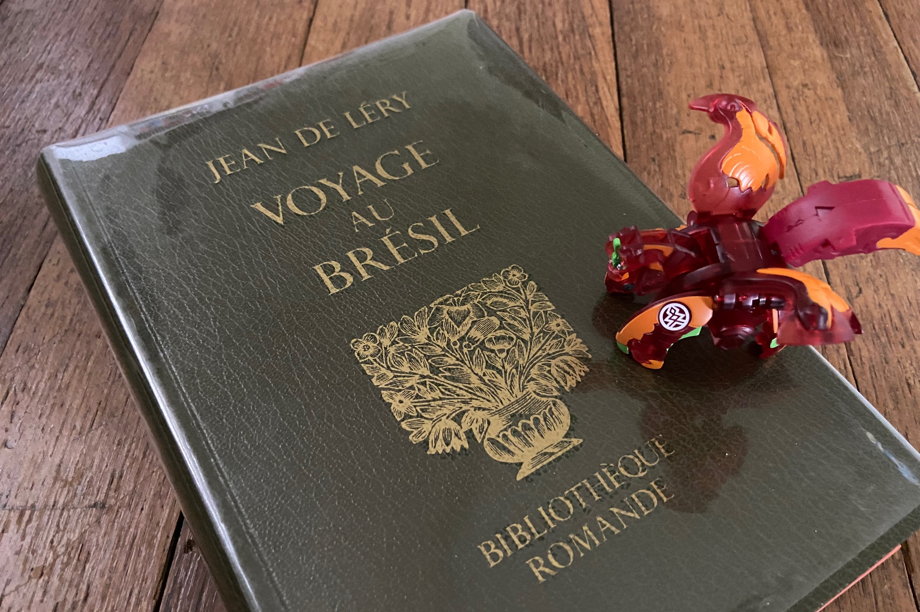
Review: Voyage au Brésil (1578), by Jean de Léry. Arrangement by Francis Tann. May 2021.
Reading time: 4 minutes
Return to Blog Home
May 16th, 2021 at 11:07pm
Please consider disabling your ad blocker, it disrupts site functions in addition to blocking ads. Thank you!
This book has it all.
Pirates. Colonialism. Revenge. Religious chauvinism. Naked natives. Slavery. Face-eating lizards. Toe-biting bats. War. Cannibalism. Lawsuits. Starvation and death.
Background on this series is here.
Jean de Léry's Voyage au Brésil offers a cornucopia of the human condition, with an emphasis on the awful, and it's all true.
But there's a colossal problem.
Roughly a third of the way in, the text, loaded with multiple dependent clauses, begins to follow a plodding cadence. Inconceivably, and despite the surfeit of dramatic extremes endowed with tension and conflict, reading Voyage au Brésil becomes unpleasant, even painful.
The text is a trustworthy and rich historical document, appropriate for social scientists.
I barely finished the book, which was an unfortunate surprise: Voyage au Brésil should have been a riveting piece of travel writing.
A Complex Tale
The author
Jean de Léry was born in Burgundy in the mid 1530s. In November 1556, he interrupted his religious studies in Geneva to join a party bound for the South American colony known as France Antarctique—specifically Fort Coligny, near Rio de Janeiro.

Only four and a half sentences on this page. |
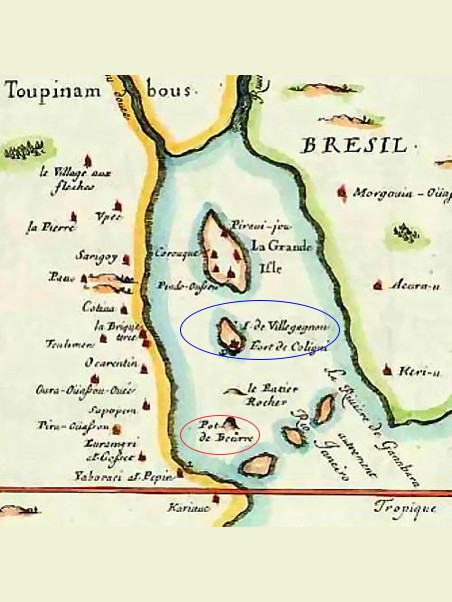
A primitive map. The blue circle is Fort Coligny. The red circle is now Pão de Açúcar (Sugarloaf Mountain) in Rio de Janeiro. |
The pretense
Fort Coligny, named after the French admiral Gaspard de Coligny, was established by Lord Villegagnon, an officer of the French navy.
Like all forays into the Americas, the outpost was a springboard for plunder—but the colonial ghoul needs lipstick and rouge, so the fort was also (in theory, at least) a Calvinist refuge or safe haven during the bloody Wars of Religion (1562-98).
Voyage au Brésil offers a cornucopia of the human condition, with an emphasis on the awful, and it's all true.
Léry and his associates thus leave for Brazil to "spread the Gospel in America" and extend "the amplification of the reign of Jesus Christ...among a nation which did not know the real God." He confesses a desire "to see this new world," too.
The one-up
The author also feels compelled to correct a popular book by André Thevet, Les singularités de la France Antarctique which, we now know thanks to Léry and subsequent scholarship, is filled with lies and exaggerations.
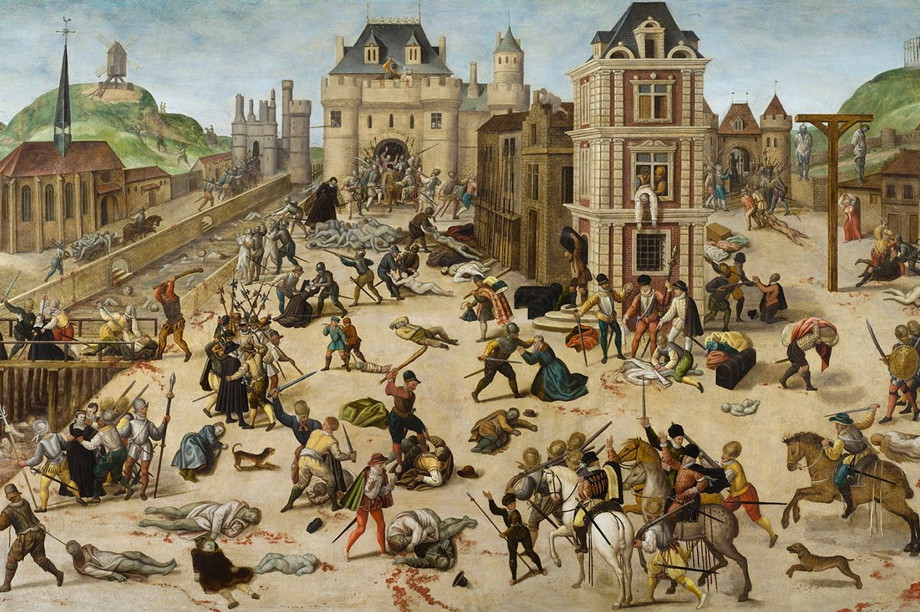
The Saint Bartholomew's Day Massacre in 1572: a horrifying episode in the Wars of Religion. Painting by François Dubois, ca. 1576. |
The arrival
After an eventful crossing of the Atlantic, the party arrives at the fort, in the middle of the Guanabara Bay, in March 1557.
Villegagnon immediately puts them to work moving dirt and rocks. "He seemed," Léry writes awkwardly, "to treat us a little more severely than a good father (as he had said, when we got here, that he wanted to be) would be toward his children."
Léry only shows an awful side of himself when he discusses religion.
The break
The inevitable occurs eight months later. Léry hates Villegagnon, who, while unpleasant and often cruel, also seems to support the doctrine of transubstantiation, a concept heretical to Protestants.
Léry and a few others retreat to an area they call "the Brickyard," about a mile from Fort Coligny—near the current site of the Passeio Público in Rio de Janeiro. This is where Léry begins his appreciation for and relationship with the Toüoupinambaoults, or Tupinamba, an indigenous tribe allied with the French.
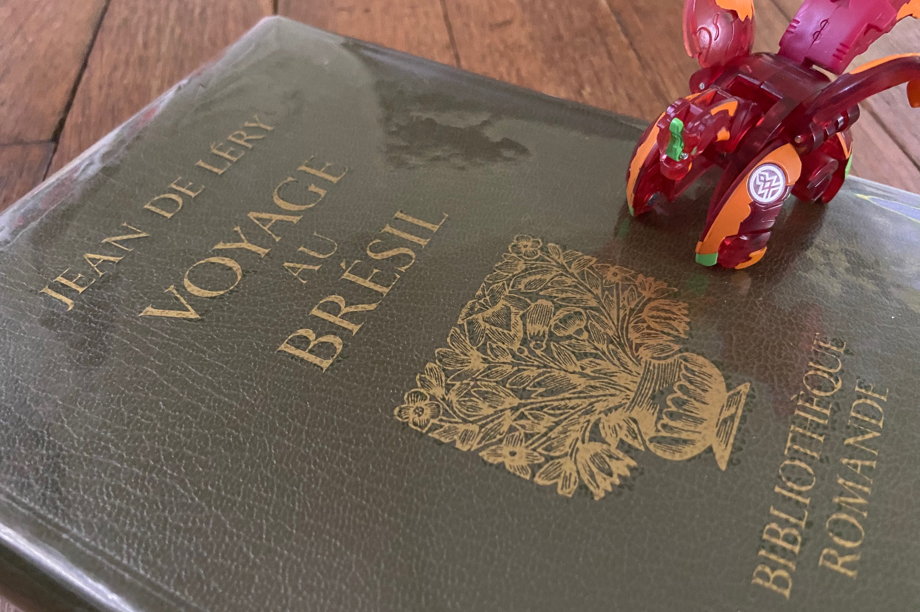
Many Europeans were disturbed by indigenous inhabitants' nakedness. For Jean de Léry, it was the cannibalism. |
The heart of Brazil
Léry spends two months at the Brickyard, followed by a year in the interior. In a clear-eyed, mostly non-judgmental way, He makes hundreds of observations about the land and the people.
- Normands, who survived shipwrecks years before Léry's arrival, serve as translators.
- The Tupinamba eat toads, snakes, and toüous which are, I believe, tegu lizards. Léry writes, "It's true that at the beginning, I was horrified, but after tasting them, as far as meat was concerned, I was only singing lizards."
- The women smash newborn's noses at birth; a wide flat nose is considered attractive.
- They cook all meat on a smoking grill called a boucan, where we get the word "buccaneer."
- Léry calls the Tupinamba "sauvages" and "Américains" interchangeably.
- On multiple occasions, Léry says the Tupinamba people and customs are either superior to Europeans or no worse.
- When the birds sing in the trees, the Tupinamba (who practice a form of ancestor worship) shush Léry: "Be quiet and let us hear the good news our grandfathers are currently proclaiming."
- If one sleeps with bare feet sticking out, small bats will bite their toes and suck out blood without them feeling a thing. The Tupinamba will laugh at the person for messing up their bed.
- Ananas (pineapples) are "the most excellent fruit in America."
- After the Tupinamba capture an enemy, they give him a drunken party, kill him with a blow to the head, cut him into pieces, and cook him on a boucan—not a rotating spit, like Thevet says—then eat him.
Blatant Chauvinism
Léry only shows a hard-edged, disparaging side of himself when he discusses religion.

The Story of a Voyage Made to the Land of Brazil, Otherwise Known as America. |
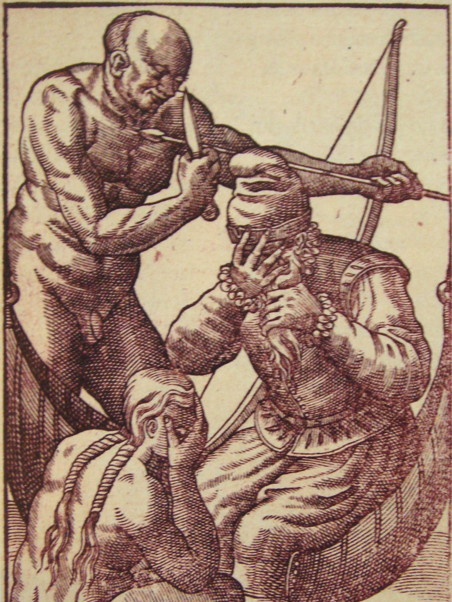
As a sign of hospitality, Tupinamba women cry heavily when a guest arrives. |
He mocks spiritual leaders called Caraïbes ("Caribbeans") as an obvious sham.
He and some fellow Westerners plan to spring a converted Christian prisoner (and only him), but appear too late and find his limbs searing on a grill and his severed head on display.
Gina Says:
- I haven't been terribly excited about going to Brazil, but that seemed interesting.
- He really hated that one guy (Villegagnon).
- Indigenous people live in environments I wouldn't last a day in.
In Chapter 16, subtitled, On the grand ignorance of God in which they have plunged, Léry maintains the Tupinamba "have no knowledge of the one true God." He laments that they have no understanding or conception of writing, "one of the most tremendous gifts [we Christians] have received from God."
So Thorough
Léry devotes the remaining chapters to:
- Sickness and healing
- Policing
- Polygamy
- An impressive glossary of the Tupinamba language
- His trip home
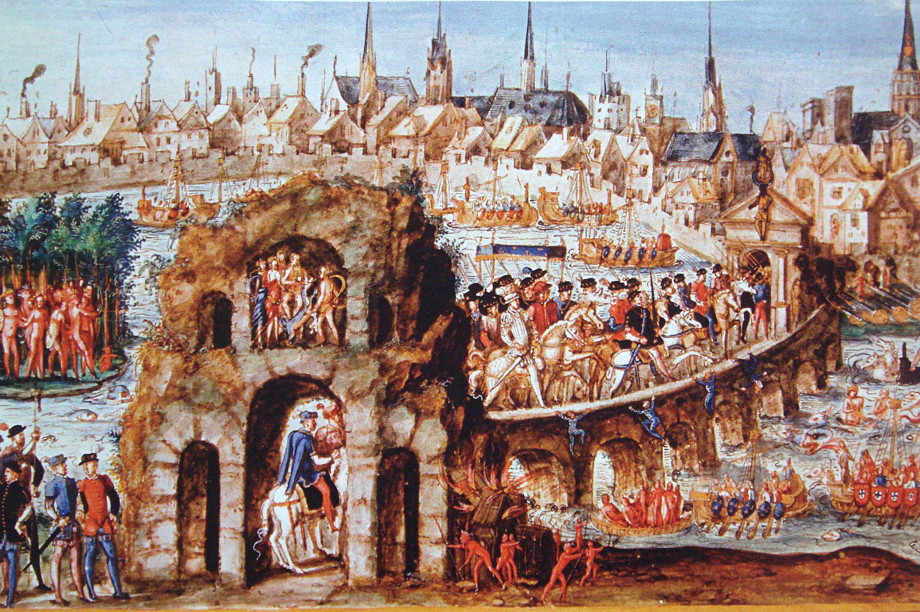
In Rouen in October 1550, three hundred naked men re-enacted a battle between the Tupinamba and Tabajara for King Henry II. Anonymous, 1550. |
In the last chapters, he returns to France with pirates and almost starves en route. When they reach land, in May 1558, a fellow passenger eats too much too quickly and dies.
Harsh Words
In France, the author discovers that Villegagnon has denounced him and several of his peers, hoping to see them burn as Calvinist heretics. (Nothing came of it.) But Léry has the last word. With the benefit of hindsight, he declares: Villegagnon is the reason French colonies in South America failed, and—ha ha, sucker—the apostate died poor and alone.
The colonial ghoul needs lipstick and rouge.
Sorta Harsh Words
The primary value of Voyage au Brésil today is academic. The text is a trustworthy and rich historical document, appropriate for social scientists, but it's much less interesting to contemporary readers of travelogues.
The problem isn't just the style. After Léry's expedition, he hasn't changed.
I have been saved from so many kinds of dangers, even pulled from the chasm of oblivion, can't I also say..."The Lord brings death and gives life"? (1 Samuel 2:6)
While this quote applies to his adventures in South America, Léry felt exactly like this before he left. In fact, he wanted to spread the Word about God's life-giving power in the New World. In other words, Léry's trip to Brazil proved to him what he already knew, and what was never in doubt.
Voyage au Brésil overflows with fascinating details, but it is unpleasant to read and lacks the tension, growth, and resolution which makes literature satisfying.
Click here to list the 44 Reviews which have already been published.
Recent Posts
Eyewitness Travel: France 4/24/2023
L'Africain du Groenland 8/2/2022
On the Plain of Snakes 5/17/2022
Volcanoes, Palm Trees, and Privilege 3/22/2022
L'axe du loup 2/28/2022
The Art of Travel 12/31/2021
Postcard: Los Angeles 11/5/2021
Afropean 8/6/2021
Roadrunner 7/22/2021
Popular Tags
Archive
Show moreAbout
Recent Tweets
If you toggle the switch above the words "Recent Tweets" and it still says, "Nothing to see here - yet," it means the idiot who broke Twitter either hasn't gotten around to fixing this feature, or intentionally broke it to get us to pay for it (which is moronic, I can easily live without it and it generated traffic to his site).


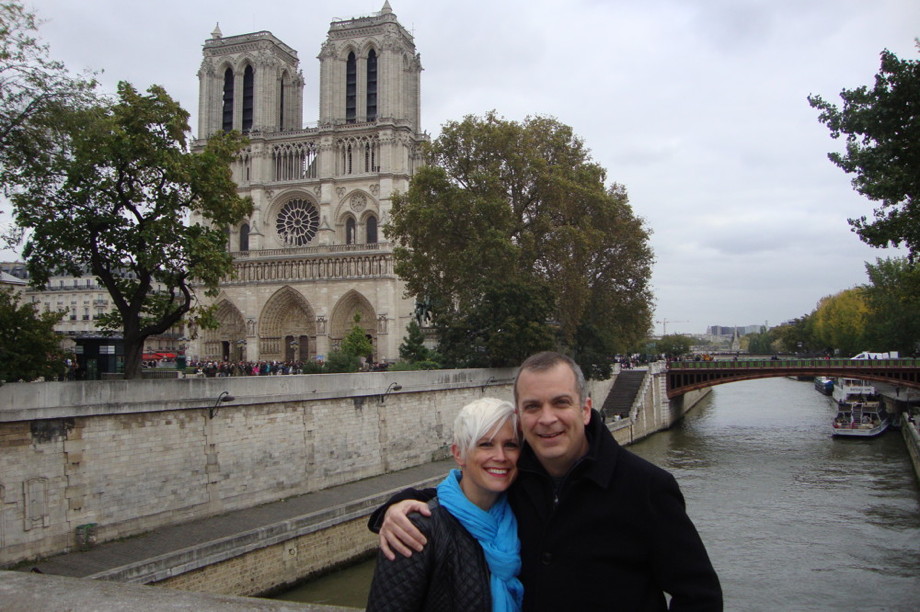



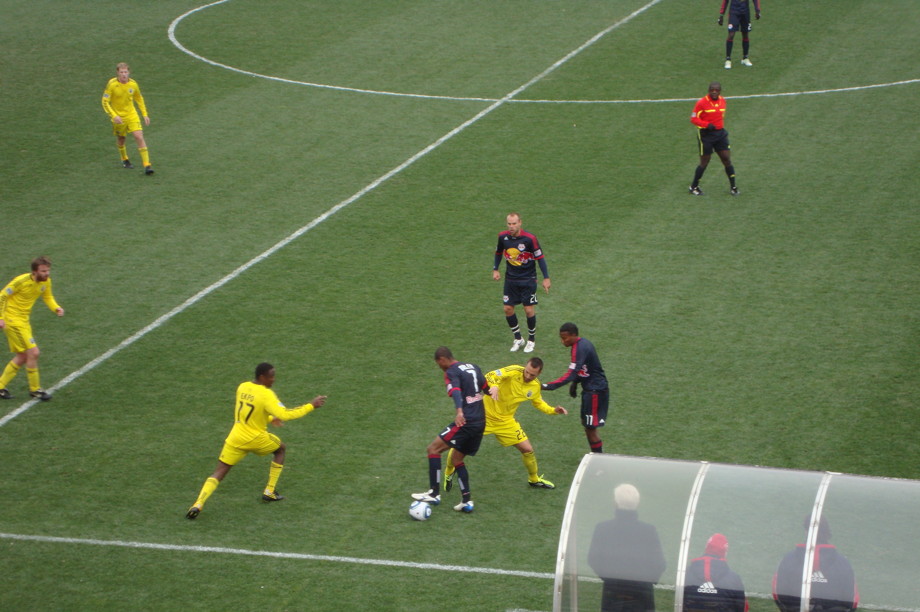

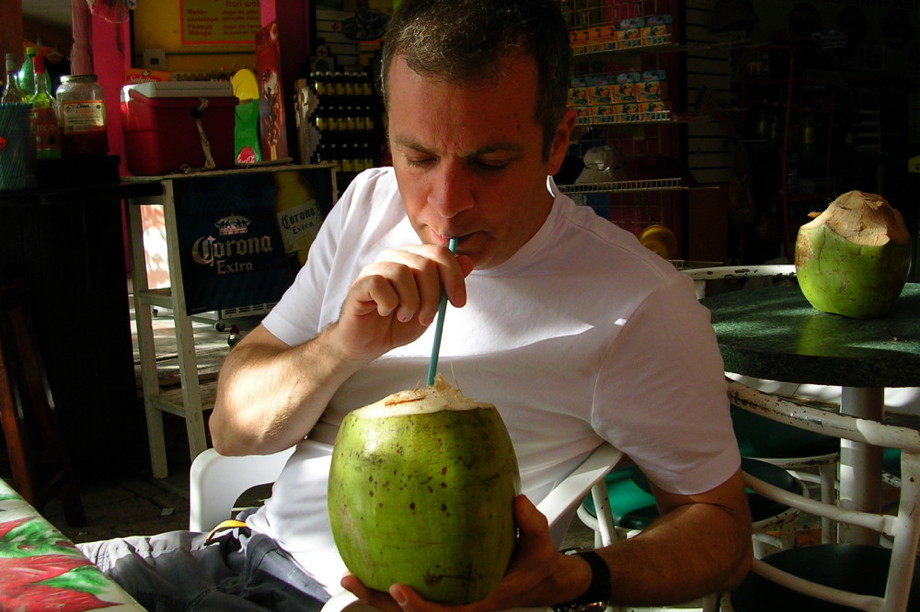
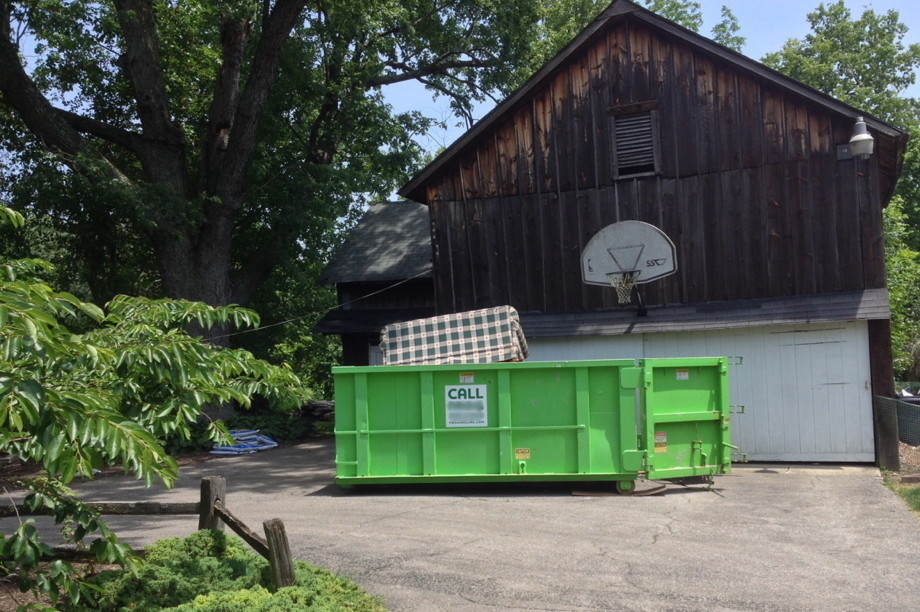

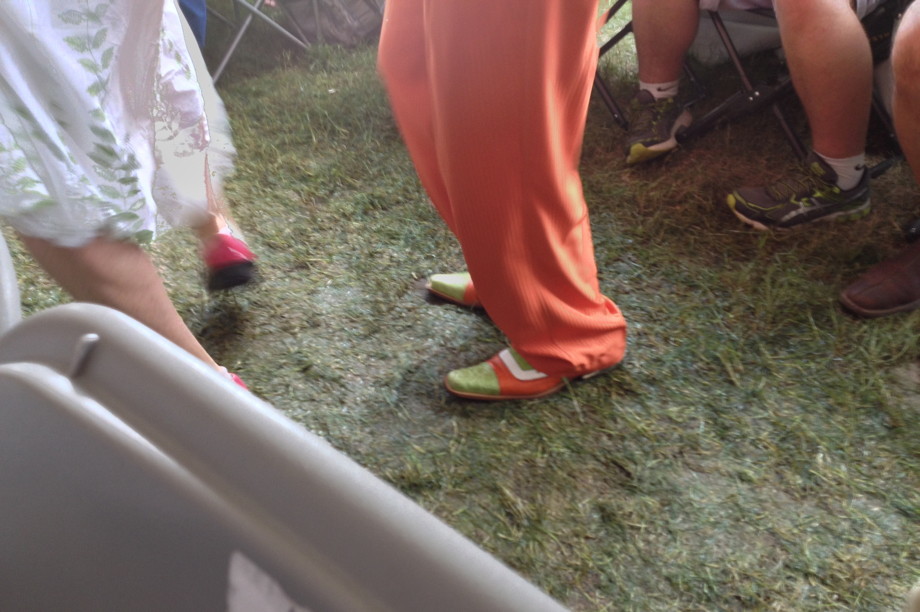
Add a comment
Comments